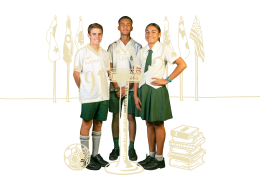TAS bucks math participation trends
Share this
Recently The Australian newspaper has run a series of stories on the decline of students selecting STEM subjects in the senior levels (Year 11 and 12). This caught my eye as the STEM program at TAS continues to grow in demand and improved performance.
The journalist, Natasha Bita, quotes recent statistics that show participation in the highest level of mathematics (in Queensland it is named Specialists Mathematics) has fallen below 10% for the first time. Further data shows enrolments in intermediate and advanced maths has fallen from 34.9% in 2008 to 26.8% in 2020 (in Queensland the intermediate subject is named Mathematical Methods, but students must study this subject in order to study Specialist Mathematics, so we won’t double count).
The article goes on to discuss Australian student’s PISA results in mathematics, highlighting that Australian students have fallen a year behind where they were positioned relatively 20 years ago and are currently positioned 3.5 years behind Chinese students of a similar age.
There is much concern expressed by a variety of field experts in the articles. There is certainly an issue nationally and future workplace career opportunities will be shaped, to a large degree, by STEM capability. Top quality teachers of mathematics are challenging to recruit.
I have previously written about the remarkable academic results of our mathematics and physics students over the last 2 years of the new ATAR system. For instance, in Specialist Mathematics, over 50% of TAS graduates received an “A” for the external exam as well as an “A” for their overall grade last year. In the previous year, 2020, similar proportions were achieved for Mathematical Methods. However, how does the participation rate at TAS compare nationally?
Whilst enrolments in “advanced” mathematics has fallen below 10% nationally, it was 21.4% and 29.5% in the last 2 years at TAS. For “intermediate” mathematics, national participation has dropped to 26.8% enrolment, whereas TAS saw 54% and 61% of our students study Mathematical Methods over the last two years.
So what? Mathematics is a crucial element of a broad education, as are many other areas. Pleasingly, what we are seeing is an increase in the proportion of TAS students, both boys and girls, selecting intermediate and advanced maths whilst nationally, we are seeing the opposite. Not only do we see an increase in participation, we are also seeing an improvement in performance. This is a result of a culture of learning, excellent qualified and committed staff who focus on student learning and mastery, and families who value education. Whilst this national trend in intermediate and advanced mathematics graduates is causing concern to government and industry, I think it is worthwhile to shine a light on a community that is bucking the national trend and achieving truly great mathematics outcomes.
Paul




